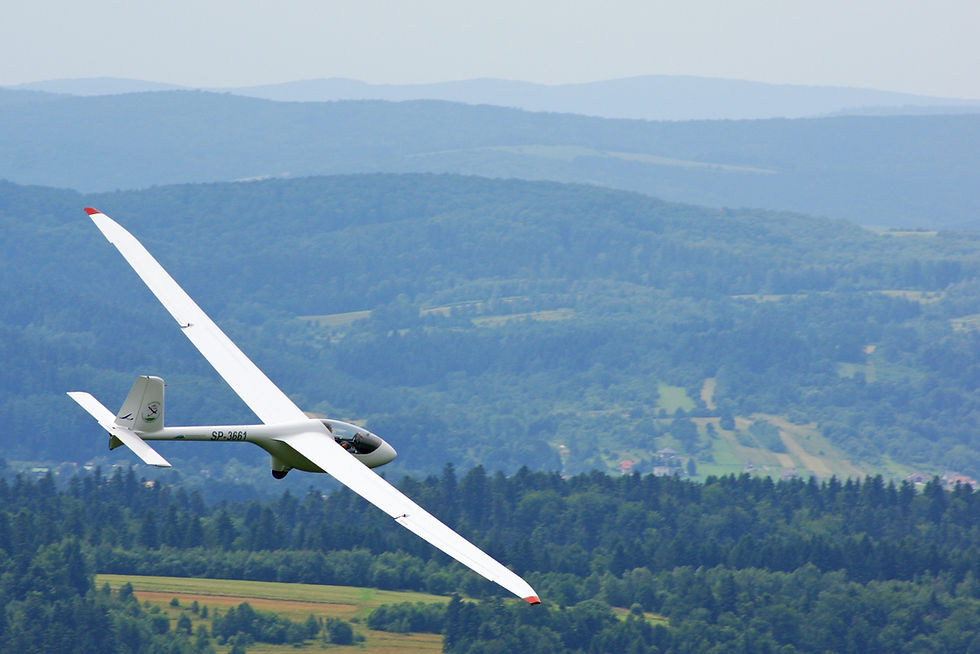Aerodynamics: Lift Theory
- Jahee Campbell-Brennan

- Jun 10, 2020
- 3 min read
Updated: Jun 28, 2021
This is an interesting, and historically hot topic.. Something i had reaffirmed relatively recently and needed reminding of is that the concepts of lift generation we’re taught are actually theories. There are many of them, and frustratingly (as with other concepts) they seem to be taught to us as fact.
Even the ‘omnipotent’ NASA cannot provide a concrete answer.

The three main theories are:
The theorem of Circulation (Kutta–Joukowski) explaining the relative airspeed differences at the upper and lower surfaces and the presence of the pressures they generate. The concept is that a net circulation of air around the airfoil arises as a reaction to a “start up vortex” that appears as the aerofoil first takes motion. This theory works mathematically, but isn't bound to any physical observation and is quite non-sensical.
Bernoulli's Theorem: Explains lift as a function of the high and low air velocities generated on upper and lower surfaces due to the airfoil profile. It also relies on the theory of equal transit, which states that due to the upper and lower surfaces of an aerofoil having different lengths, air must travel faster over the longer surface in order to meet airflow flowing from the shorter surface at the trailing edge. This has been experimentally proven as incorrect. (Video)
Downwash theory (a Newtonian approach): Explains the concept of lift solely via momentum transfer at the high pressure surface of the airfoil. This ignores the contribution towards lift from low pressure surfaces and therefore only tells part of the story, it's incomplete.
The thing is, for a theory to be accurate it must provide a complete explanation of lift, under all circumstances, the above do not. They explain what is observed during lift creation, i.e. relative air velocities and surface pressures on the airfoil surfaces, but they aren’t addressing the causes of lift creation satisfactorily.
It feels like there's a lack of thinking 'outside of the box' here and a certain rigidness to the approach. What if it was all a lot simpler? After all, we’re also taught that Newton's Laws of Motion are all encompassing.
What could be possible for creating lift if not described by the laws of motion? Let me explain how i see it.
Firstly, Newton's Third Law.
“As one object exerts a force on another object, the second object exerts an equal and opposite force on the first.”
This would explain lift force by the fact that the aerofoil is accelerating the air downwards (in the case of an aeroplane). The lift force can therefore also be measured through the energy possessed by the wing’s downwash.

The lower aerofoil surface, due to it’s geometry and angle of attack, accelerates air downwards, the high pressure we observe on the surface is simply a product of this action.
Conversely on the upper surface, what's missing from the mainstream theories is that the aerofoil creates a ‘void’ as it passes through the air.
This void and the subsequent low pressure area behind the point of max. camber on the wing surfce acts to keep flow attached, generating a suction effect for adjacent molecules and a generating a low pressure on the wing surface.

As the air molecule sees it, this all happens very quickly.
The Bernoulli effect does feature in this explanation; the proportion of flow that rises above the stagnation point over the upper surface does appear to be accelerated at the leading edge, but as it effectively expands towards the rear where the effective cross section is increasing, the wing surface acts like a diffuser. As the air slows down, conservation of energy says the net effect is zero.

It’s as simple as that in my opinion. This downwash can be beautifully observed in the below video of a commercial jet passing through cloud.
I tend to think that natural mechanisms are never super complicated in their action, they only become complicated in efforts to describe them with the introduction of mathematics.
I also feel that part of the complication we introduce is with the coordinate systems we use. As many aerodynamics problems are observed in the wind tunnel, the coordinate system of the stationary wing is used. In reality, the only valid reference to use is that of the air.
Whilst physically the same mechanisms are occurring, the visual effects of streamlines in wind tunnels sometimes confuse our perspective of what’s going on in terms of relative movements. We need to picture the movement of a molecule of air as the wing passes by it, not the other way round.
No doubt this will be a discussion point for a while, what do you guys think so far?
Here's a couple more nice 'cloud cutting' videos where you can see the volume of air accelerated downwards in what is called the downwash. This kind of observation really fascinates me.
Credit to Jan Peter Abel @ flugtheorie.de who inspired this post.
![Wavey Dynamics Logo #2 [Dark, Transparent].png](https://static.wixstatic.com/media/67d9bf_65249c4015a14615b48d0aca40b0a4b0~mv2.png/v1/fill/w_269,h_67,al_c,q_85,usm_0.66_1.00_0.01,enc_avif,quality_auto/Wavey%20Dynamics%20Logo%20%232%20%5BDark%2C%20Transparent%5D.png)






Comments